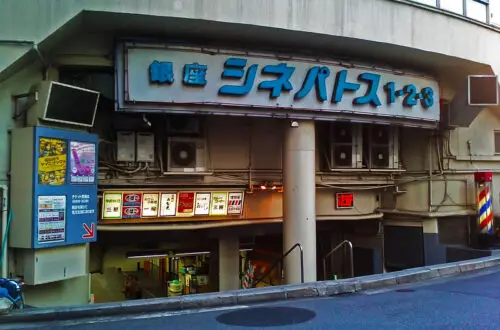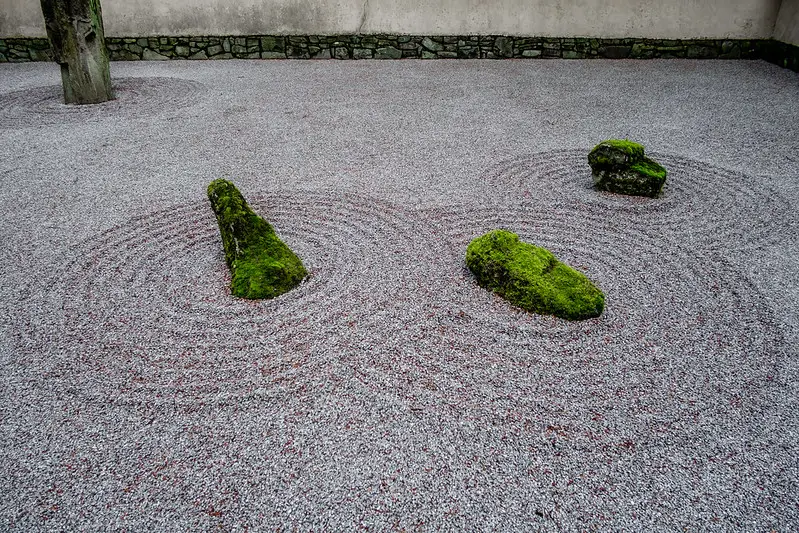
All About Zen Gardens of Japan
Zen gardens of Japan are popular due to their beautiful designs that inspire a meditative calm. In this article, we’ll see all about these unique gardens.
Zen gardens use rocks, gravel, and sand to recreate miniature landscapes. The gravel or sand is used to create swirling patterns that give a sense of calm. The concept and design were first used in Japan. Zen gardens were made during the Muromachi period (1336-1573) in shrines and temples in Japan.
Quick Navigation

More About the Japanese Zen Gardens
Zen gardens are usually small and enclosed in a boundary of rocks. The garden is made to be viewed from a vantage point constructed specially for it such as a high porch outside the garden. When the garden is created inside the premises of a temple or a monastery, the vantage point is located either in a public viewing balcony or the living quarters of the head of the monastery. Zen Gardens are also known as Rock Gardens.
History and Origin of Zen Gardens
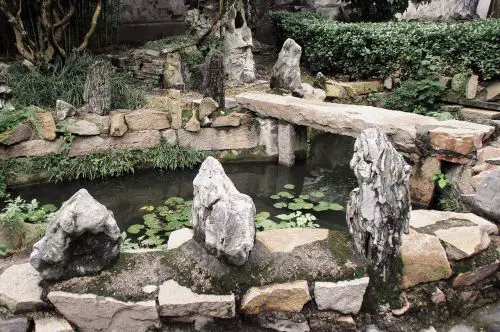
The earliest records of rock gardens in Japan are from the Heian period (794-1185). The method to create and maintain these gardens is suggested in the manual Sakuteiki (Records of Garden Keeping). These recommendations were inspired by the Chinese gardens of the Song Dynasty. This manual states exactly which types of rocks and gravel should be used. It also mentions the placement of the rocks to achieve desired patterns and effects.
In the later period, from the early 17th to the 19th century, a few new additions were made to the existing Zen gardens around Japan. They were created in places where having a real stream or small pond was not practical. Typically, they were built on the premises of monasteries and temples. In 1930, the Tofuku-ji temple, destroyed in a fire nearly eighty years back, was to be rebuilt. This was when four new Zen Gardens were created as part of the reconstruction.
How Did the Rock Gardens Come to be Known as Zen Gardens?
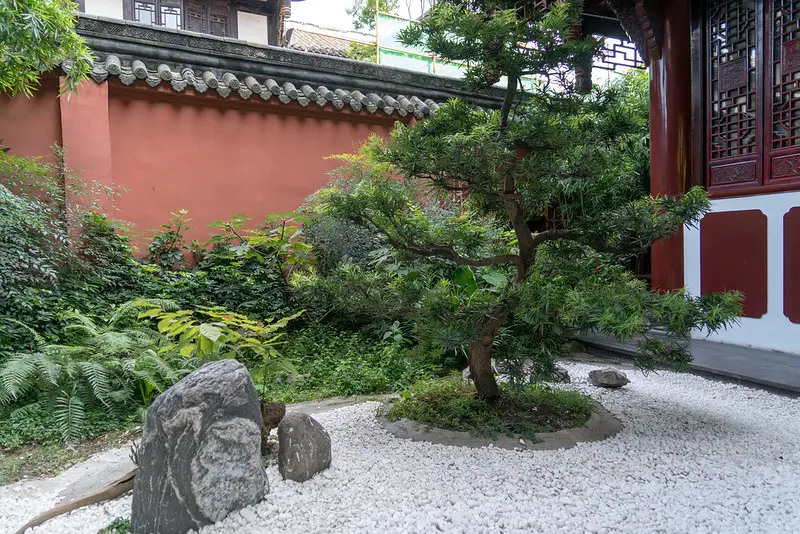
Zen Buddhism was introduced in Japan towards the end of the 12th century and it quickly gained many followers. The Zen doctrine of self-discipline resonated with many, especially with the Samurai class and the warlords. The rock gardens made during this time around Buddhist temples and monasteries imitated the Chinese gardens. Thus, the gardens were created to create an atmosphere for meditation as stipulated in the Zen doctrine.
What is Used to Make a Zen Garden?

The basic components that go into the making of a Zen garden are rocks, stones, gravel, and sand. Gravel is usually preferred over sand because sand is easily disturbed by rain or wind, gravel stays better. Apart from this, sometimes moss, water, and other vegetation are also used to beautify the gardens. Waterfalls, mountains, hills and ravines, and other such natural scenes are depicted in a Zen garden.
Symbolism in Zen Gardens

Zen gardens represent Nature in an abstract form. They were thought of as being able to inspire a meditative calm. White sand and gravel are preferred in Zen gardens. Also, in Shinto religion, the white color of the sand and gravel denotes purity. Thus, rock gardens with a white color scheme were created around shrines, temples, and palaces. They often represent water or empty spaces.
The idea behind building a Zen Garden is to represent a part of nature in a miniature form. Only the part being captured in the build is isolated and represented. The space around it is kept empty. Thus, white gravel is used to create a sense of distance. This highlights the represented aspect and lets the viewer focus on it, thus inspiring meditation.

Careful placement of rocks and gravel makes for some stunning visuals such as the Kameshima which features a rock turtle that seems to be swimming in a pond made up of moss. Some structures are very basic such as the Zazen-seiki. It is just a flat rock that is believed to radiate calm and silence. Another example would be the Zen garden at Daisen-in. It has a river represented by white gravel that is a symbol of the journey of life.
When the gravel is arranged to give the appearance of water, it is known as samon or hokime. As a result of the patterns, it looks like rippling water. In the Zen philosophy, this pattern is said to evoke the concentration required for meditation. Larger stones and rocks are used to represent mountains and hills. Sometimes tended shrubs are also used as mountains. Moss represents forest cover.
Zen Gardens in Japan
There are several Zen gardens in Japan, most of them created many years ago around shrines and temples. Kyoto has a high number of Zen Gardens. Below are the 11 famous Zen gardens in Japan.
Zen Gardens, Tofuku-ji, Kyoto
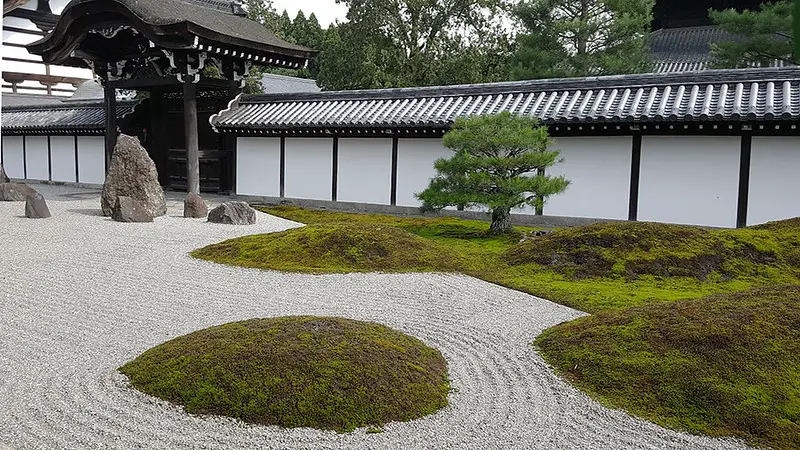
The Zen gardens at Tofuku-ji are very famous. They were designed by the scholar Mirei Shigemori in 1930 when the temple was reconstructed. Shigemori had studied the principles of Japanese gardens. For the Zen gardens at Tofuku-ji, he combined the age-old principles of rock gardens with modern designs. As a result, the gardens are modern yet imbibe the spirituality characteristic of Zen gardens.
- Open hours – 8:30 AM to 4 PM
- Getting there – The Tofukuji temple can be reached in ten minutes walking from the Keihan Tofukuji Station. There is a bus from the Kyoto station also available.
- Website – http://www.tofukuji.jp/
Jisso-in Zen Garden, Kyoto
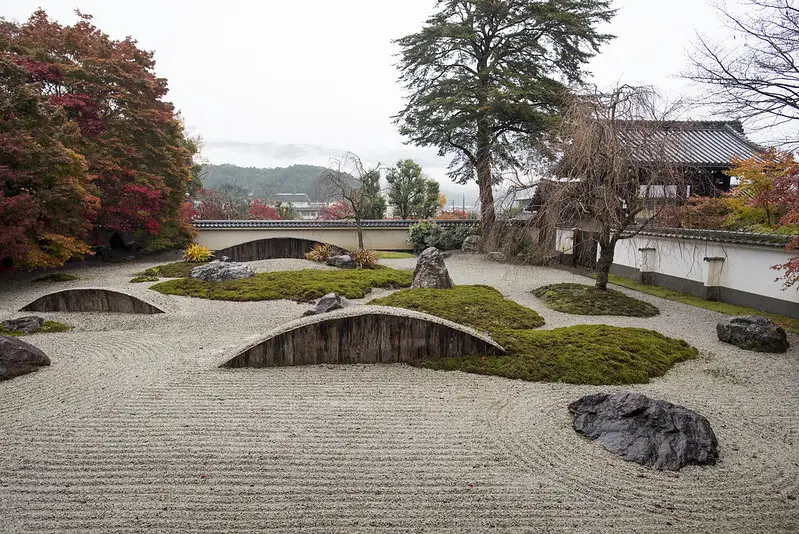
Situated in the Iwakura suburb of Kyoto, Jisso-in is an old temple. The Zen garden is located in front of the temple. It was rebuilt recently in 2014 by Garden Designer Katsuaki Ogawa. It has a modern art design and is known as ‘The Heart Garden’. This modern design makes it one of the unique Zen gardens. It also has a rock that represents the Hiei Mountain.
It has the gravel and pebbles that are characteristic of Zen gardens. The garden also features moon-shaped stones that appear to be submerged underwater. Also, the moss growing over formed stones complements the garden’s design. The border is made up of trees. The feel of the Zen garden is modern, yet spiritualistic and extremely beautiful to behold.
- Open hours – 9 AM to 5 PM (All days)
- Getting there – Take a Kyoto subway from the Kyoto station to Kokusaikaikan. Then, take a bus to Jisso-in.
- Website – http://www.jissoin.com/
Fudaraku Rock Garden, Shitennoji Temple, Osaka

The Shitennoji Temple is one of the oldest temples in Osaka. The Zen garden here is quite well-known due to its unique structure. It also has stepping stones that go through the gravel. The gravel is supposed to represent the ocean. There are other rocks that represent mountains. Shrubs are pruned to make them look one with the boulders placed. And, the tall pine trees look like clouds in the background making the picture complete.
- Open hours – 8 AM to 4 PM (All days)
- Getting there – The Shitennoji Temple can be reached by train from the Tennoji Station or from the Shitennoji-mae-Yuhigaoka station.
- Website – http://www.shitennoji.or.jp/
Ryoan-ji Zen Garden, Kyoto
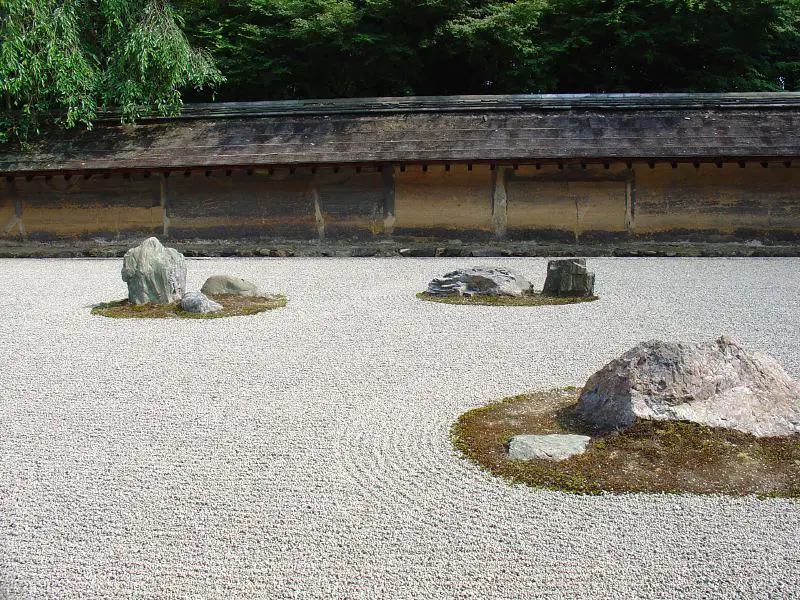
This is one of the finest Zen gardens in Japan. It is also included in Japan’s World Heritage Sites list. It is a garden made from highly polished white gravel. There are swirling patterns like ripples created in the gravel. The garden also contains 15 rocks placed in a specific arrangement. The garden is divided into 5 parts each having rocks arranged in a specific way.
The viewing point is from a verandah a little distance away. However, from the viewing point, only 14 rocks are visible from any given place. It is said that all 15 rocks are seen only by someone who has achieved enlightenment. The whole arrangement is created to encourage meditation and peace. It stimulates a connection with nature.
The garden has an interesting symbolism, too. However, there are two lines of thought here. According to one theory, it represents tiger cubs swimming in water and mountains. On the other hand, others believe that it represents groups of islands
- Open hours – 8 AM to 5 PM (All days)
- Getting there – Buses are available from the Keihan Sanjo Station or Ryoan-ji Station. The Kyoto subway can also be taken up to the Kitaoji Station and then a bus from there to the Temple.
- Website – http://www.ryoanji.jp/smph/eng/
Zuiho-in Zen Gardens, Kyoto
Zuiho-in is a sub-temple of the Daitoku-ji temple located at Kita-ku, Kyoto. It was supposed to be the family temple of the Otomo, one of the early Christians in Japan. There are two Zen gardens in the temple premises.
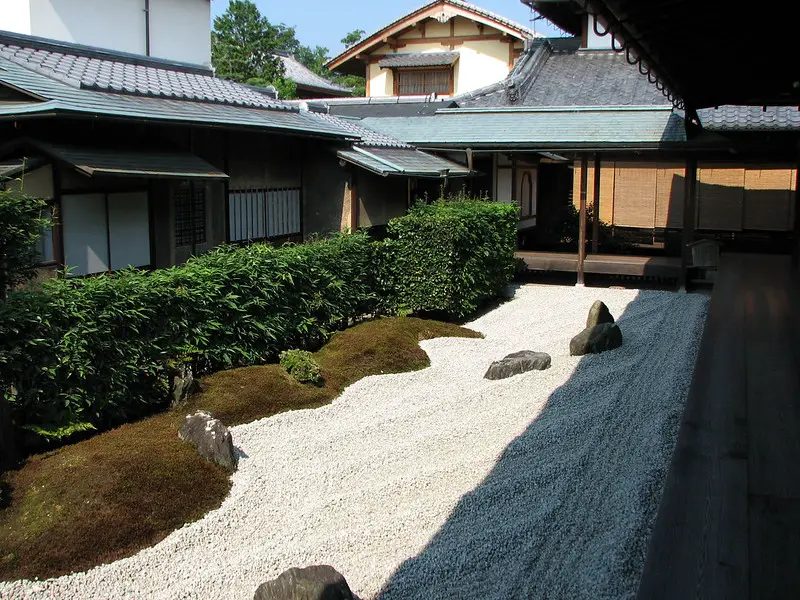
The Garden of the Cross: This garden features a Cross and also the statue of the Virgin Mary. Also, the garden was created in 1961 by Garden Designer Shigemori Mirei.

The Dokuzha-tei garden: This garden is also known as the Garden of Solitary Sitting. The Chinese characters used in the name (独坐庭 ) refer to an island in the Taoist mythology. When the garden is viewed from far, it looks as if a thin peninsula is protruding from the Mountain of the Blessed into the sea.
- Open hours – 9 AM to 5 PM (All days)
- Getting there – From the Kitaoji station, a fifteen-minute walk will take you to the Daitoku-ji Temple, inside which the Zuiho-in Temple is located. Buses are also available from the Kyoto Station to the Daitokuji-mae bus stop.
Isamu Noguchi Garden Museum, Kagawa
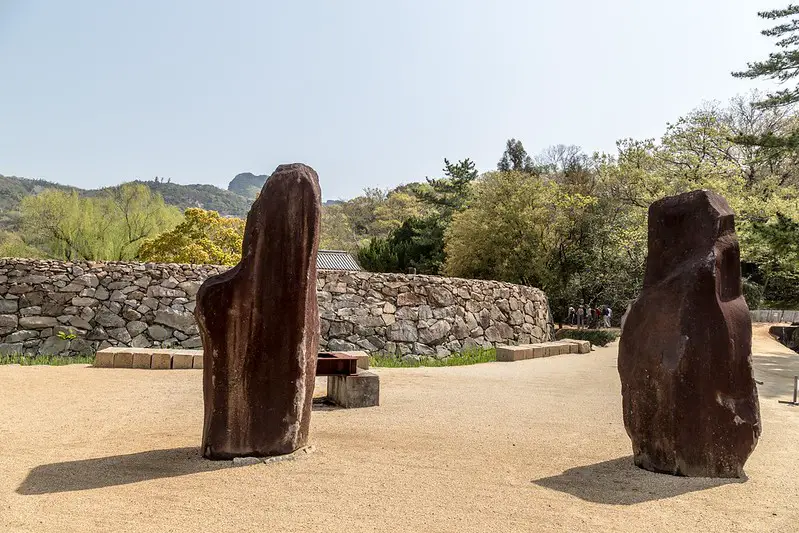
The museum features the sculptures of the Japanese-American artist, Isamu Noguchi. One of the highlights of the museum is the Zen garden made by the artist. The small garden features granite rocks surrounded by gravel. Most of the rocks have smoothened out over time. However, some still retain their previous natural form.
- Open hours – 10 AM to 5 PM (Tuesday, Thursday, Saturday)
- Getting there – A 25-minute taxi ride from JR Takamatsu Station can get you here. Alternatively, a bus ride to Bus Stop No. 7 for Anji “Prayer Iwayoichi Park Mae” and then a 7-minute walk can get you here.
- Website – http://www.isamunoguchi.or.jp/
Banryutei Rock Garden, Kongobu-ji Temple, Koyasan
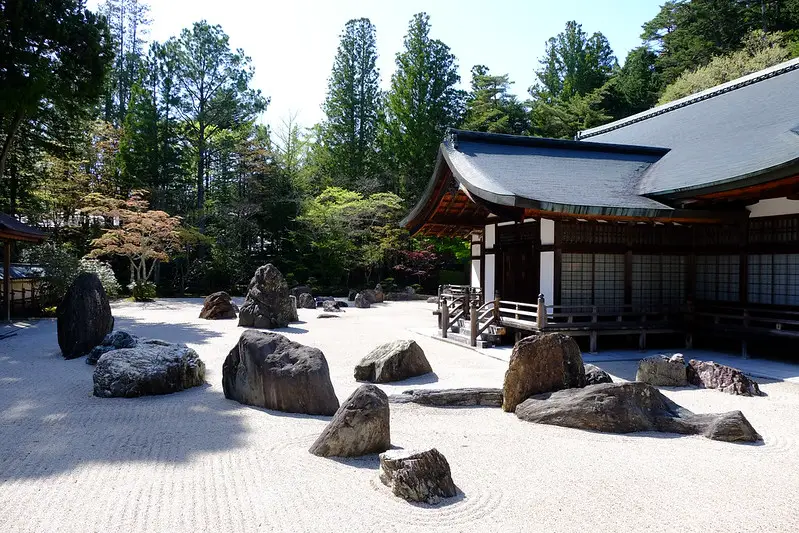
This is Japan’s largest rock garden. It is on the premises of the 16th century Kongobu-ji temple. Just behind the main building is this Zen garden which is spread over an area of more than 2300 square meters. It was built in 1984. The rocks used in the garden are from Shikoku.
It has 40 granite rocks surrounded by gravel. Also, the gravel has swirling patterns on it. The placement of the rocks is such that it appears as if a pair of dragons are protecting the temple.
- Open hours – 8:30 AM to 5 PM (All days)
- Getting there – You can reach here by taking the Nankai Koyasan Line to Gokurakubashi Station, then Nankai Koyasan Cable to the Koyasan Station.
- Website – http://www.koyasan.or.jp/
Daisen-in Temple, Daitoku-ji, Kyoto
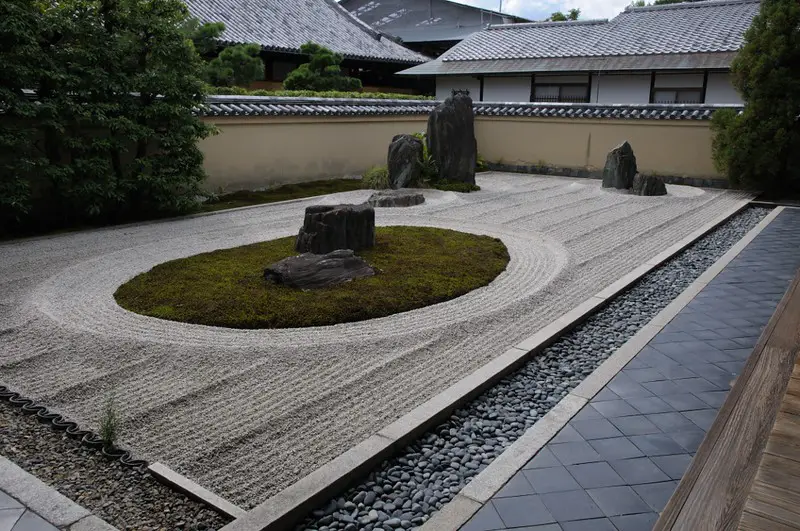
The Daisen-in is also a sub-temple of Daitoku-ji. It is known for its landscape garden known as the kare-sansui. The garden has been reportedly created by Soami who was a monk as well as a painter. It is inspired from a painting from the Song dynasty.
It features rocks and clipped shrubs as mountains and raked white gravel as a river. The river branches into two rivers that meet the sea and the ocean. The sea and the ocean are also made from white gravel. The rivers also have other stones placed to denote a boat and a turtle.
- Open hours – 9 AM to 5 PM (All days)
- Getting there – From the Kitaoji station, a fifteen-minute walk will take you to the Daitoku-ji Temple, inside which the Daisen-in Temple is located. Buses are also available from the Kyoto Station to the Daitokuji-mae bus stop.
- Website – https://daisen-in.net/
Zuisen-ji Temple, Kamakura

The Zen garden on the premises of the Zuisen-ji temple is one of the early Zen gardens. The temple’s Head Priest Moso Soseki personally overlooked the construction of the garden. It was built in the early 14th century. Also, the rocks used in the design are raw. So, they haven’t been manually shaped. This Zen garden is the last of the Zen gardens from the Kamakura Era that still remains.
- Open hours – 9 AM to 5 PM (All days)
- Getting there – A train can be taken from the JR Kanagawa Station. A bus can be taken to either Kamakuragu Shrine or to Tsurugaoka Hachimangu. From here, a short bus ride or a fifteen-minute walk, respoectively, will take you to the Temple.
- Website – http://zuisenji-temple.net/
The Adachi Museum of Art, Yasugi

The Adachi Museum is a Michelin 3-star venue. It features 6 Japanese gardens. Of these, the Zen gardens are a thing of utter beauty. It features three big rocks in the center which symbolize waterfalls. They merge into the rivers symbolized by the white gravel. As a result, the landscape created highlights the beauty of nature.
- Open hours – 9 Am to 5 PM (All days)
- Getting there – From the Yasugi Station, there is a free shuttle bus to the Temple. It can also be reached by car from Yasugi IC on the San’in expressway.
- Website – https://www.adachi-museum.or.jp/
Anyo-in Kare Sanui, Taisan-ji, Kobe
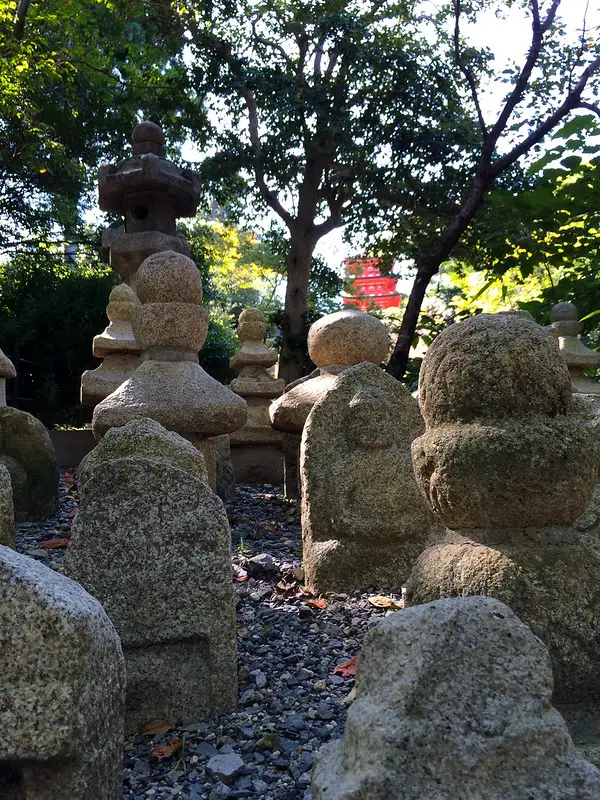
Taisan-ji is a temple in Kobe. The Anyo-in Zen garden was created during the late 16th century. This beautiful rock garden is a national Place of Scenic Beauty of Japan. It has large rocks and boulders and white pebbles and sand. The place is known for its calm vibes. It is a place that inspires spirituality and meditation.
- Getting there – From Kenchommae (Hyogo), you can take the subway to Sogoundokoen. From here, the Temple is a half-hour walk away. If you are coming from Kobe, a car ride of about 15 minutes will take you to Taisan-ji.
Zen Gardens Around the World
Over the last century, Zen gardens have been built in many places around the world. The concept of Zen gardens and the serenity it brings in has become a popular landscape designing choice. So, here are some of the well-known Japanese Zen gardens around the world.
Japanese Tea Garden, San Francisco, California

The Japanese Tea Garden at the Golden Gate Park in San Francisco has a beautiful rock garden built in the 20th century. It was designed by Makoto Hagiwara. Even though it is built outside Japan, it maintains the traditional rock structure and placement. The garden is in the middle of the bustling city. However, once you enter it, you are transported to a different world. The place is calm and is great to sit and relax and take in the breathtaking landscape views.
The Sand and Stone Garden, Portland
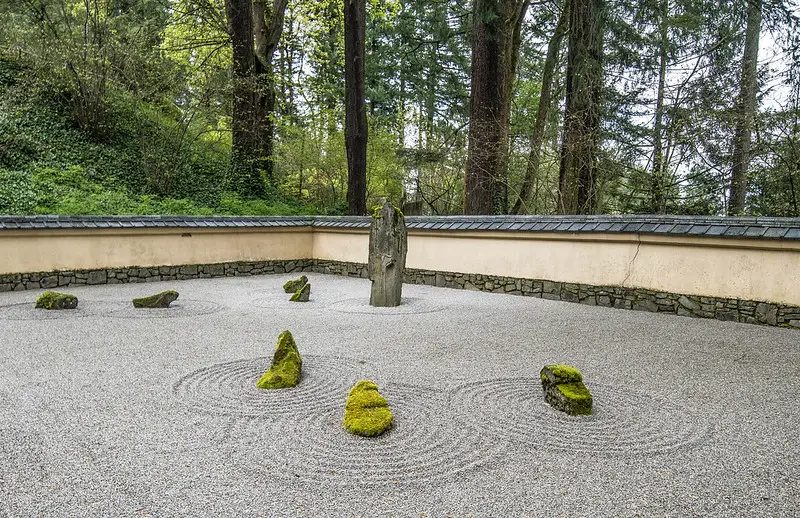
As the name suggests, this garden in Portland is made from gravel and rocks. It comprises of a large standing boulder and several smaller rocks spread across the garden. Also, these rocks are surrounded by carefully raked gravel. The swirling patterns in the gravel denote the ripples in the ocean.
Japanese Garden, Chicago Botanic Garden, Glencoe
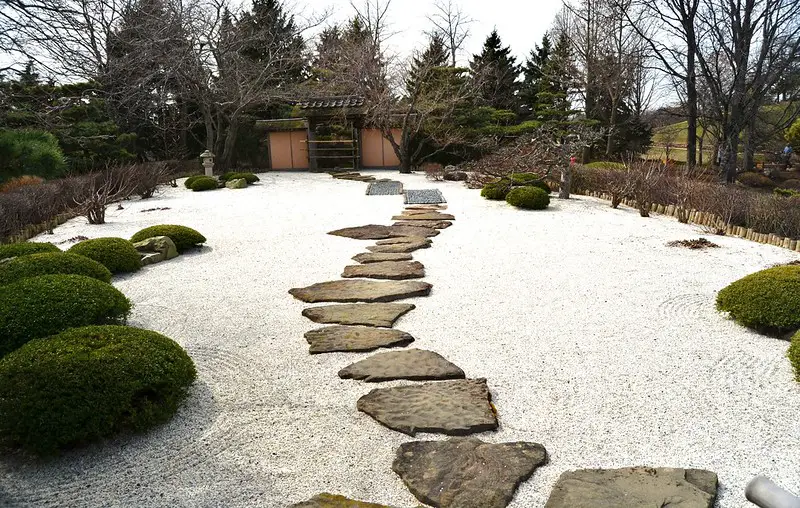
The Japanese garden in Chicago gives an aura of something ancient, natural, and serene. It has a rock formation of half-buried rocks that give the entire garden a look and feel of the Japanese tradition. The unique thing about the garden is that it is kept in as natural a form as possible. So, moss is allowed to grow on the rocks. Also, the garden is not pruned and let to display all its natural beauty.
Fort Worth Japanese Garden, Texas
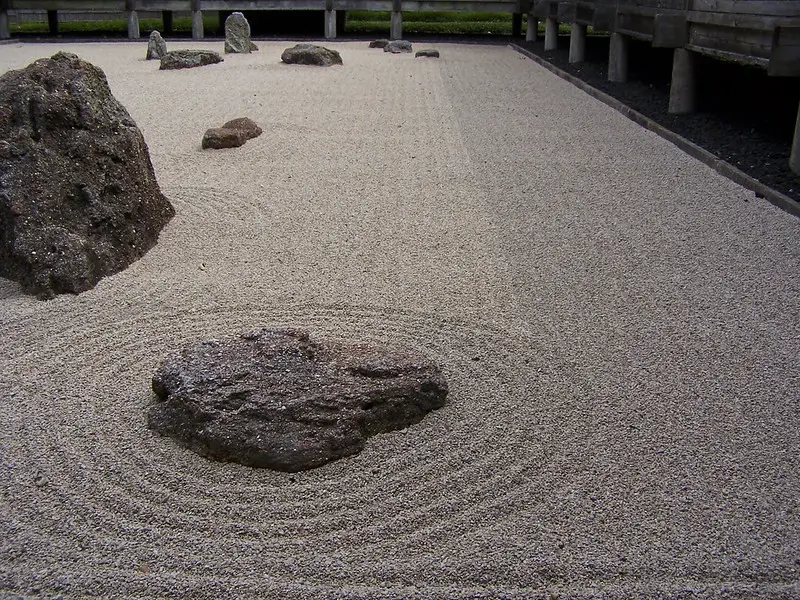
This beautiful and serene garden in Texas represents the Japanese garden designing techniques. It was built in 1973 and features two dry gardens. This is a flat garden composed of 15 rocks. This design represents waterfalls. The design is inspired from the Daisen-ji garden. The still garden represents the Colorado river meeting the Grand Canyon.
St. Mungo Museum of Art, Glasgow, Scotland

This is the first Zen garden in the UK. It is a small garden made of rocks and gravel. The gravel is raked to make the traditional swirling patterns. With grass running along the periphery of this rock garden, it makes for a beautiful landscape. No wonder, it is quite popular with the garden visitors to sit and behold the landscape while they sip tea.
Conclusion
Taking a stroll through the calm Zen Gardens or sitting at the viewing point looking at the patterns can be very relaxing. As you try to find different meanings in the structures and formations of the Zen Gardens, it is an immersive and meditative experience. Also, soak in the Japanese culture as you look at these unique gardens.
Can’t get enough of Japanese art? Read about Kintsugi, another unique Japanese art.




